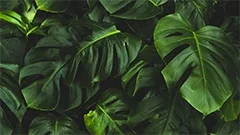Introduction
Winter, a season characterized by low temperatures and limited resources, poses significant challenges for plant survival. This course aims to provide an in-depth exploration of the physiological adaptations and survival strategies that plants employ during the winter months. Understanding these mechanisms will help us appreciate the resilience and tenacity of these sessile organisms as they navigate through one of the most challenging periods of their life cycles.
Definition of Winter
Winter is a season typically defined by two criteria: low temperatures (below the optimal growth range for most plants) and decreased availability of water, light, and nutrients. It can last from several weeks to several months, depending on the geographical location.
Importance of Studying Plants in Winter
Studying plants during winter provides valuable insights into their adaptive strategies for survival in extreme conditions. These adaptations have evolved over millions of years, allowing plants to thrive in a wide range of environments across the globe. Understanding these mechanisms will not only contribute to our general knowledge of plant physiology but also hold practical applications for agriculture, horticulture, and ecosystem conservation.
Scope of the Course
This course will cover various aspects of plant physiology relevant to their survival during winter, including:
- Cold Hardiness: The ability of plants to withstand freezing temperatures without damage
- Dormancy: The state of reduced metabolic activity and growth during winter
- Photoperiodism: The regulation of growth and development in response to day length changes
- Water Relations: Changes in water uptake, storage, and loss during winter
- Nutrient Acquisition and Storage: Adaptations for efficient nutrient utilization during winter
- Responses to Frost, Snow, and Wind: Mechanisms that protect plants from damage by these winter elements
- Role of Hormones in Winter Survival: The role of plant hormones such as abscisic acid (ABA) and auxins in regulating winter-related processes
- Strategies of Different Plant Types: Comparison of survival strategies between herbaceous, woody, annual, perennial, and coniferous plants
- Ecological Implications: Impact of winter adaptations on plant communities and ecosystems
- Practical Applications: Lessons learned from studying plants in winter for agriculture, horticulture, and conservation
Cold Hardiness
Definition of Cold Hardiness
Cold hardiness refers to a plant's ability to withstand freezing temperatures without sustaining irreversible damage. This is achieved through a combination of physiological and biochemical adaptations.
Factors Affecting Cold Hardiness
- Genetic Factors: Inherited traits that determine a plant's cold hardiness level
- Developmental Stage: Younger plants are generally less cold-hardy than mature ones
- Acclimation: The process by which plants increase their cold tolerance in response to decreasing temperatures
- Freezing Avoidance Strategies: Mechanisms such as supercooling and antifreeze proteins that help plants avoid freezing
- Freezing Tolerance Strategies: Ability of plants to withstand freezing without sustaining damage, achieved through dehydration, cellular and membrane protection, and repair mechanisms
Dormancy
Definition of Dormancy
Dormancy is a state of reduced metabolic activity and growth during unfavorable environmental conditions, such as winter. It allows plants to conserve resources and prevent damage until more favorable conditions return.
Types of Dormancy
- Ecodormancy: Dormancy induced by seasonal changes in the environment
- Endodormancy: Internal cues, such as hormones or aging, induce dormancy in plants
- Facultative Dormancy: Dormancy that can be broken at any time under favorable conditions
- Obligate Dormancy: Dormancy that cannot be broken until specific conditions are met
Photoperiodism
Definition of Photoperiodism
Photoperiodism is the regulation of growth and development in plants based on the length of day and night. This helps plants adapt to seasonal changes, including winter.
Key Concepts of Photoperiodism
- Photoperiodic Responses: Changes in growth and development induced by photoperiodic cues
- Critical Day Length: The minimum or maximum day length required for a specific photoperiodic response to occur
- Phytochrome System: A group of photoreceptors that mediate the effects of light on plant growth and development
- Vernalization: The process by which plants are induced to flower in response to long periods of cold temperatures (often during winter)
Water Relations During Winter
Changes in Water Uptake, Storage, and Loss During Winter
Plants adapt their water relations strategies during winter to conserve water and prevent damage from freezing. This includes changes in root growth, water uptake, and stomatal behavior.
Role of Hydraulic Adaptations in Winter Survival
- Xylem Structure: Modifications to the xylem structure that allow plants to withstand winter frost
- Cold Hardiness of Vascular Tissues: Adaptations that enhance the cold hardiness of vascular tissues
- Water Storage Organs: Structures such as rhizomes and tubers that store water during winter
Nutrient Acquisition and Storage During Winter
Adaptations for Efficient Nutrient Utilization During Winter
Plants employ several strategies to conserve nutrients during winter, including changes in root growth, nutrient uptake, and storage.
Strategies for Nutrient Conservation During Winter
- Root Growth: Modifications to root system architecture that optimize nutrient acquisition during winter
- Nutrient Uptake: Changes in the ability of roots to absorb nutrients under low-temperature conditions
- Nutrient Storage: Accumulation and storage of nutrients for use during periods of limited availability
Responses to Frost, Snow, and Wind During Winter
Mechanisms Protecting Plants from Damage by Winter Elements
Plants have developed various strategies to protect themselves from damage caused by frost, snow, and wind during winter. These include structural adaptations, protective molecules, and repair mechanisms.
Importance of Structural Adaptations in Winter Survival
- Cold Hardiness of Aboveground Tissues: Modifications to the structure and composition of aboveground tissues that enhance cold hardiness
- Morphological Adaptations: Changes in plant shape and size that optimize survival during winter
- Snow Loading and Insulation: Strategies that help plants withstand the weight and insulating effects of snow
Ecological Implications of Winter Adaptations
Impact of Winter Adaptations on Plant Communities and Ecosystems
Winter adaptations have significant implications for plant communities and ecosystems, as they influence species distribution, community structure, and ecosystem function.
Practical Applications of Studying Plants in Winter
Lessons Learned from Studying Plants in Winter for Agriculture, Horticulture, and Conservation
Understanding the adaptations plants employ during winter has numerous practical applications for agriculture, horticulture, and conservation. This includes improving crop resilience, developing cold-hardy ornamental plants, and restoring ecosystems damaged by climate change.
Breeding Cold-Hardy Crops and Ornamentals
- Identifying Desirable Traits: Using knowledge of winter adaptations to breed cold-hardy crops and ornamentals
- Genetic Engineering: Manipulating plant genomes to enhance cold tolerance in agriculturally important species
Restoring Ecosystems Damaged by Climate Change
- Conservation of Native Species: Protecting and restoring native plant species that have adapted to local winter conditions
- Ecological Restoration Techniques: Using appropriate plant communities to restore damaged ecosystems, taking into account their winter adaptations
MCQ: Test your knowledge!
Do you think you know everything about this course? Don't fall into the traps, train with MCQs! eBiologie has hundreds of questions to help you master this subject.
These courses might interest you
Create a free account to receive courses, MCQs, and advice to succeed in your studies!
eBiologie offers several eBooks containing MCQ series (5 booklets available free for each subscriber).




